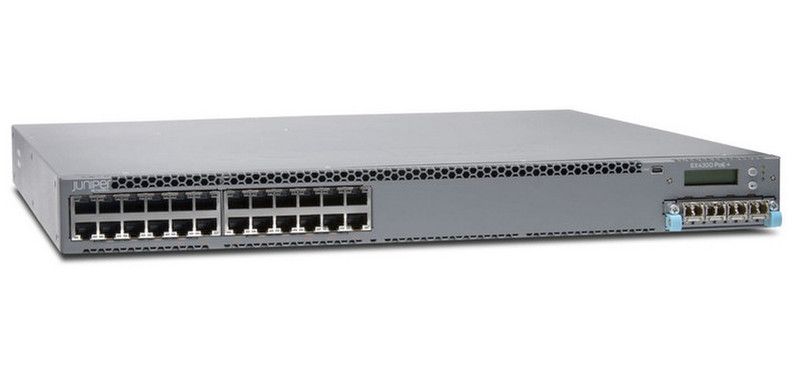
Small & Medium Business less than 2000 employees.Enterprise Business more than 2000 employees.You can also explicitly set none as the action. If you do not set an action, then theĪction is none. log-Do not drop the packet but generate an alarm, an SNMP trap, or a system log.drop-Drop the packet and generate an alarm, an SNMP trap, or a system log entry.
JUNIPER EX4300 MAC TABLE SIZE MAC
One of the following actions performed when the limit of MAC addresses
JUNIPER EX4300 MAC TABLE SIZE FOR MAC
Actions for MAC Limiting and MAC Move Limiting Than the configured number of moves happens within one second, theĬonfigured action is performed. These MAC movements are tracked, and if more Switching table entry is flushed from the original interface and added If 802.1X is not configured, the Ethernet Request sent by the host can be one for a new IP address or one to Reauthenticated if 802.1X is configured on the switch). The host has to renegotiate its IP address and lease (or be In general, when a host moves from one interface to another, MAC address is detected on an interface, the packet is trapped to the Initial learning results when the host sends DHCP requests.

Have not been learned by the switch from accessing the network. MAC move limiting prevents hosts whose MAC addresses Juniper’s Technical Documentation on MAC Move Limiting: MAC Move Limiting The feature that mimics Cisco’s switchport port-security mac-address sticky feature on Juniper platforms is ethernet-switching-options secure-access-port vlan (all | vlan-name) mac-move-limit. It’s bizarre how difficult this answer was to find. What have others done? Has anyone else found a way around this dynamically? I’m not sure if this was the design goal, but from someone who is in a heavy transition to Juniper, I find this shortcoming a big deal since 802.1X is not yet feasible in our environment.

show ethernet-switching table persistent-macĭefault 00:10:94:00:00:02 installed ge-0/0/1.0 Now comes the strange part, if you change the port, JUNOS automatically migrates the mac-address over to the port it sees the mac-address on next. show ethernet-switching table persistent-macĭefault 00:10:94:00:00:02 installed ge-0/0/0.0 showĪfter verifying the mac-address has been registered persistently. We will also assume we are using the same laptop in the Cisco example. Also, yes, I understand that the family ethernet-switching commands are missing. Now, the configuration that will net you the same desired outcome in JUNOS are as follows. Although this isn’t a security control, per se, it does work twofold in ensuring the administrator has proper port control with a fully populated 6550, this might mean the difference of entire floors, VLANs, or even subnets. It’s more of a basic switch function not really knowing what to do with more than 2 mac-address entires being registered on the same switch. Now, from my understanding, this isn’t necessarily a security mechanism. CiscoSwitch>show interface statusįa0/1 notconnect 1 auto auto 10/100BaseTXįa0/2 err-disabled 1 auto auto 10/100BaseTXįa0/3 notconnect 1 auto auto 10/100BaseTXįa0/4 notconnect 1 auto auto 10/100BaseTXįa0/5 notconnect 1 auto auto 10/100BaseTXįa0/6 notconnect 1 auto auto 10/100BaseTX

Obviously, Cisco switches will throw the port into an err-disabled state since port Fa0/2 is attempting to connect with a mac-address that is already registered on the switch. Now, let’s say an end user has the mobility of a laptop, and decides to plug the laptop in somewhere else we’ll assume they plug into port Fa0/2 on the same switch. Switchport port-security mac-address sticky 0010.9400.0002 Switchport port-security mac-address sticky Switchport port-security violation restrict I’ll elaborate.īelow, you can see that port Fa0/1 is configured for sticky-mac, and once a device is plugged into the port, it loads the mac address into running-configuration for that single port. I’m trying to figure out if there is an inherent flaw in the way JUNOS handles sticky-mac addresses across their switch-ports versus how Cisco handles them.


 0 kommentar(er)
0 kommentar(er)
